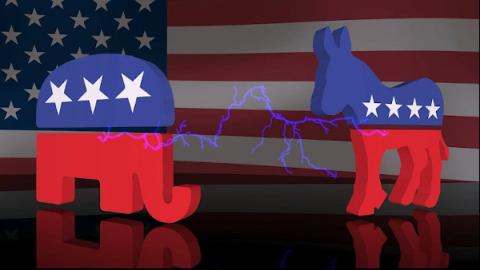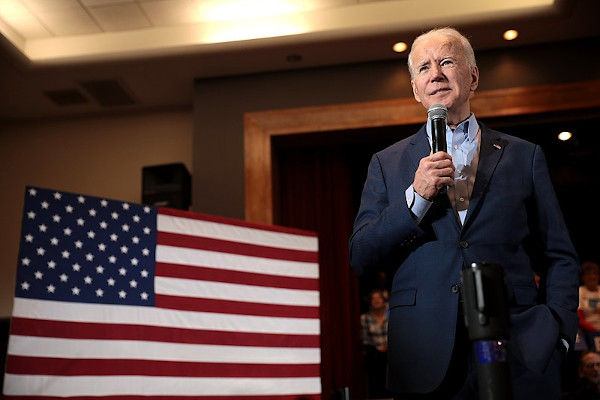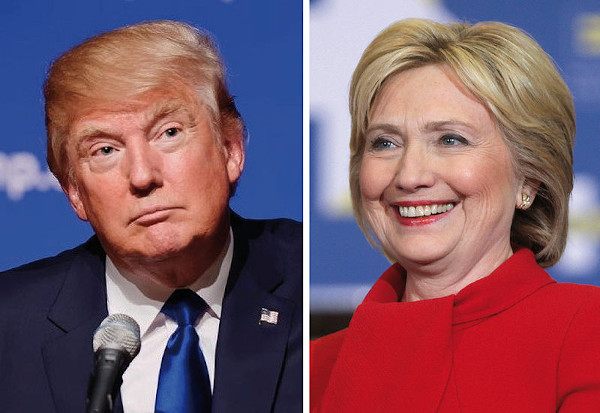Democrats vs. Republicans: Why the Two-Party System Will Likely Stay

The American two-party system has long been besieged. Many of the founders feared that organizing people along ideological lines would be dangerous to the fledgling nation. Alexander Hamilton called political parties a “most fatal disease,” James Madison renounced the “violence of faction,” and George Washington feared that an overly successful party would create “frightful despotism.”
The contemporary U.S. population isn’t terribly keen on parties, either, and tends to give them lukewarm performance reviews. A majority – 57 percent – of Americans believe that parties do “such a poor job” that a third major party is needed, and only 38 percent think that parties do “an adequate job.”
Recent events may suggest that our two-party system is, unsurprisingly, cracking. The rise of Donald Trump caused ripples in the Republican Party by upending its traditional hierarchy, and self-described Democratic Socialist Bernie Sanders’ surprising front-runner status in the Democratic presidential primary has revealed deep divisions among Democrats.
Significantly, these changes have occurred while trust in government and approval of Congress sit at historic lows. So, then, as some have argued, is America facing the death of its party system?
As a political scientist, I can offer a clear “no.”

Why Parties?
Like all democracies – and some autocracies – the U.S. will always have parties. They are necessary and inevitable for two reasons.
First, they facilitate the collective representation of individual interests.
Parties address an important issue in democracies: People have the freedom to ask government to do things, yet the voice of any single individual is quiet. Parties amplify individual voices by combining them into a louder, cohesive message.
Such organized input is necessary for reasonably effective governance, which prevents rebellion. As famed political scientist E.E. Schattschneider wrote in his 1942 book, “Party Government,” “Modern democracy is unthinkable save in terms of parties.”
Second, particularly among voters with little political knowledge, party identification simplifies voting. A voter may know nothing about candidates on Election Day but can use their party identification to make a reasonable decision.
Even if many Americans find parties imperfect, they do use them. Without parties, democracy could not function.

Why Two Parties?
Likewise, the two-party system will survive, regardless of political turbulence. This is a result of how the U.S. elects leaders.
In the vast majority of its congressional, gubernatorial and state legislative elections, America uses a system called single member district plurality, which means that each election produces only one winner.
Because voters generally do not wish to “waste” a vote, they focus on their most preferred electable candidate.
Because in a two-party system, the major parties seek to appeal to broad coalitions to maximize electability, this is almost always a Republican or a Democrat. It is almost never a third-party candidate, which the voter might actually prefer. Candidates and their wealthy supporters recognize this, and so they ally with major parties rather than creating a third.
A quick look at U.S. history demonstrates the inevitability of these forces.
The very founders of the republic who opposed factionalism created the Federalist Party to support a strong national government and oppose the Anti-Federalist Party, which favored a decentralized government.
When the question of federal supremacy was settled, the Anti-Federalists were replaced by the Democratic-Republican Party, which championed Southern agricultural interests. When the Federalists died out, the Democratic-Republican Party split into the Whigs and Democrats, who disagreed about the balance of power between branches of government.
By 1856, a collapsing Whig Party was replaced by the anti-slavery Republican Party, whose feuds with the pro-slavery Democrats led to the Civil War.
From that point forward, those two dominant national parties have remained stable. Third-party challenges have been limited and generally unimportant, usually driven by specific issues rather than broad-based concerns.
This is an excerpt from an article by Alexander Cohen originally published in The Conversation. Read the rest here.
Author Bio:
Alexander Cohen is an assistant professor of political science at Clarkson University.
Highbrow Magazine
Image Sources:
--Chayka 1270 (Pixabay, Creative Commons)
--Gage Skidmore (Wikipedia Commons)
--Gage Skidmore (Wikimedia.org)































































































































































































































































































































